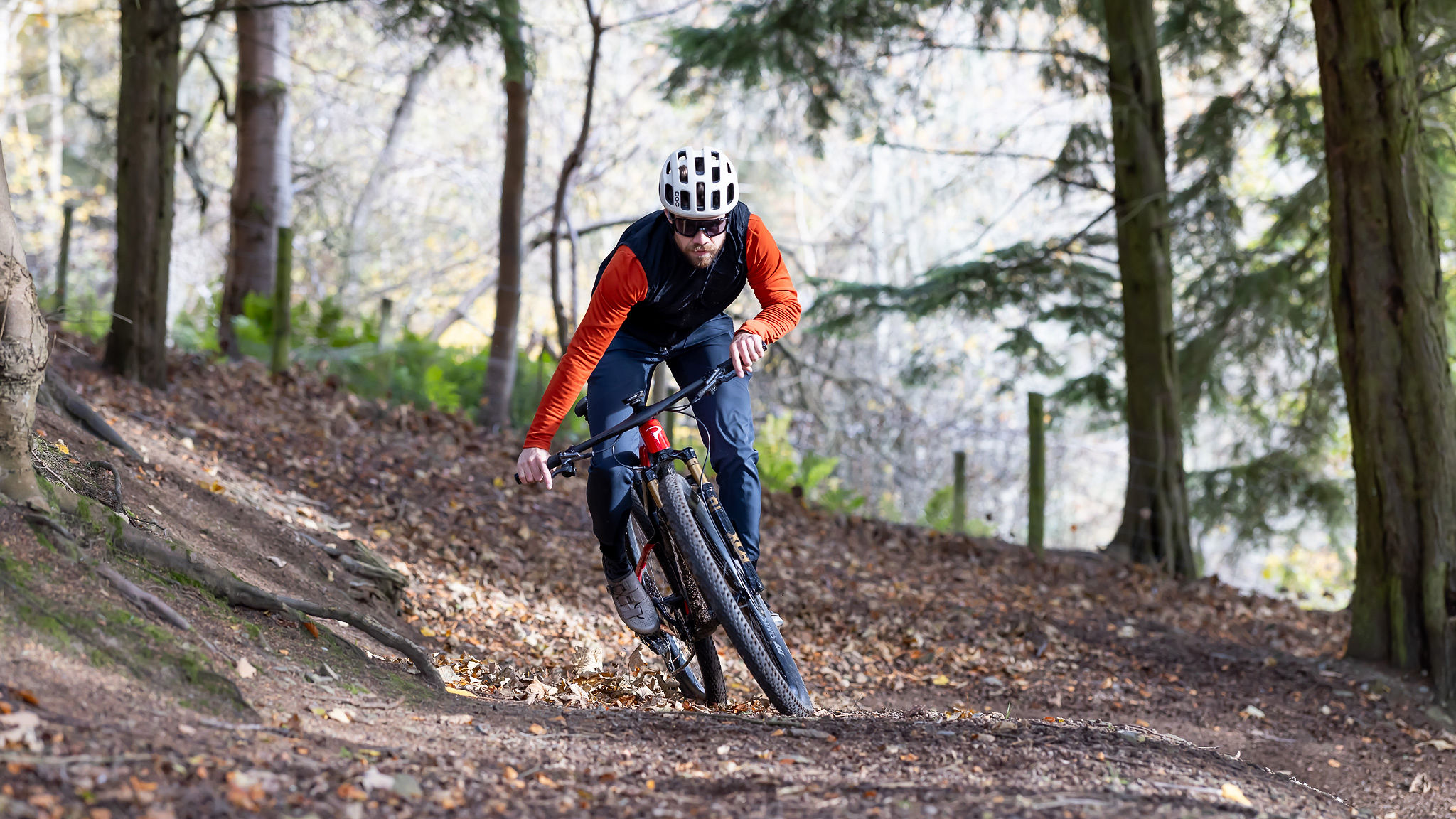Best mountain bike disc brake rotors – the key to better braking power
Brake control is crucial and these are the best mountain bike disc brake rotors to help you achieve it
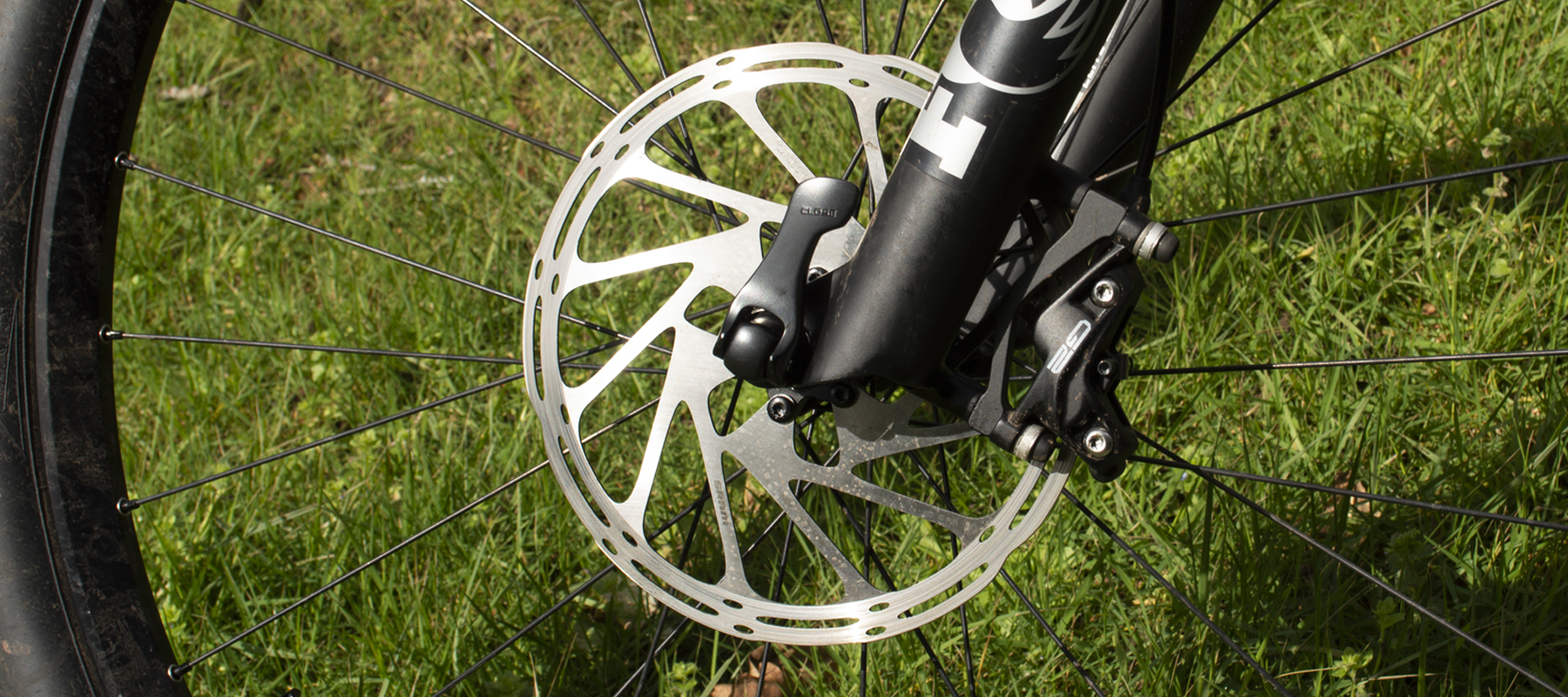
Buying the best mountain bike disc brake rotors is not the first thing that pops into many riders’ minds when it comes to MTB upgrades, but a new set of rotors is a relatively inexpensive upgrade that can mean less weight, less noise, and more braking power. You can have the best mountain bike brakes, but if they can’t bite your rotors you won’t be able to slow down effectively.
Increasing braking power is one of the best mountain bike upgrades you can make, as the faster you can stop, the later you can brake. While there are many contributing factors to a fast time down a trail, arguably your ability to control speed at crucial points could be just as significant as line choice and fitness.
Our expert reviewers have rounded up the best disk brake rotors available. Our top pick is the no-frills but excellent SRAM CenterLine, with the Aztec Alloy/Steel Floating Rotor our best value buy. Read on for our complete list of recommended disc rotors.
As with everything in the bike industry, there are many options available and different fitments, sizes, and types to consider. So, if you’re unsure whether you need new rotors or are confused about what you’re looking for, skip to the bottom of the page for our guide to choosing the best mountain bike disc brake rotors.
The quick list
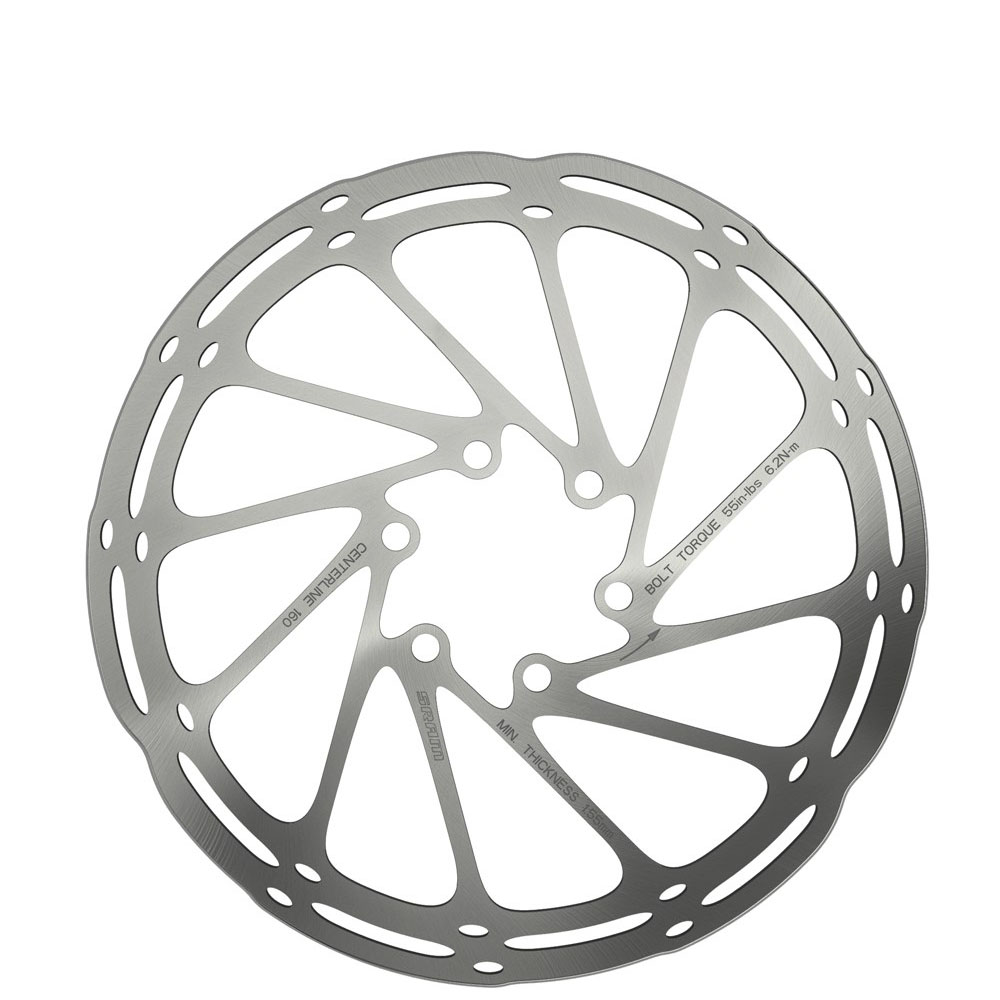
Best mountain bike disc brake rotor overall
No-nonsense stoppers that compare well with high-end competition.
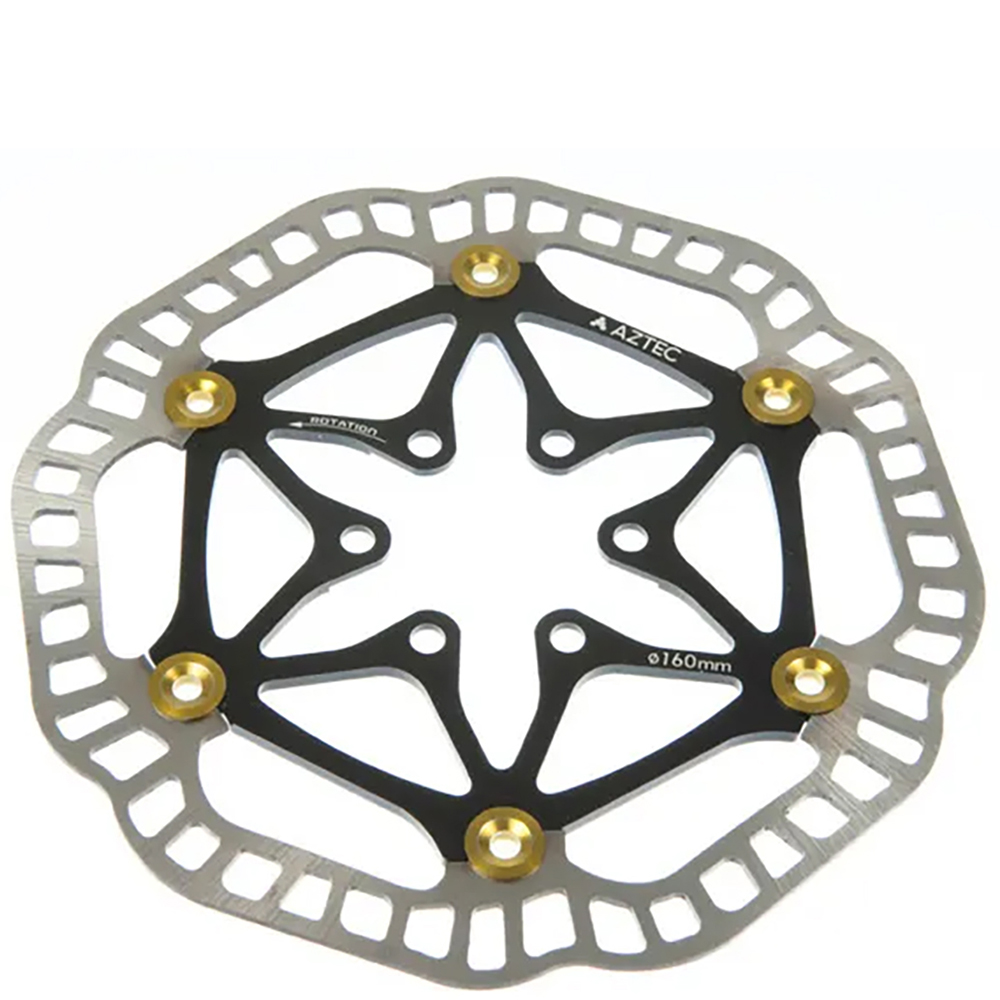
Best value mountain bike disc brake rotor
Lightweight, budget disc brake rotor available in two sizes.
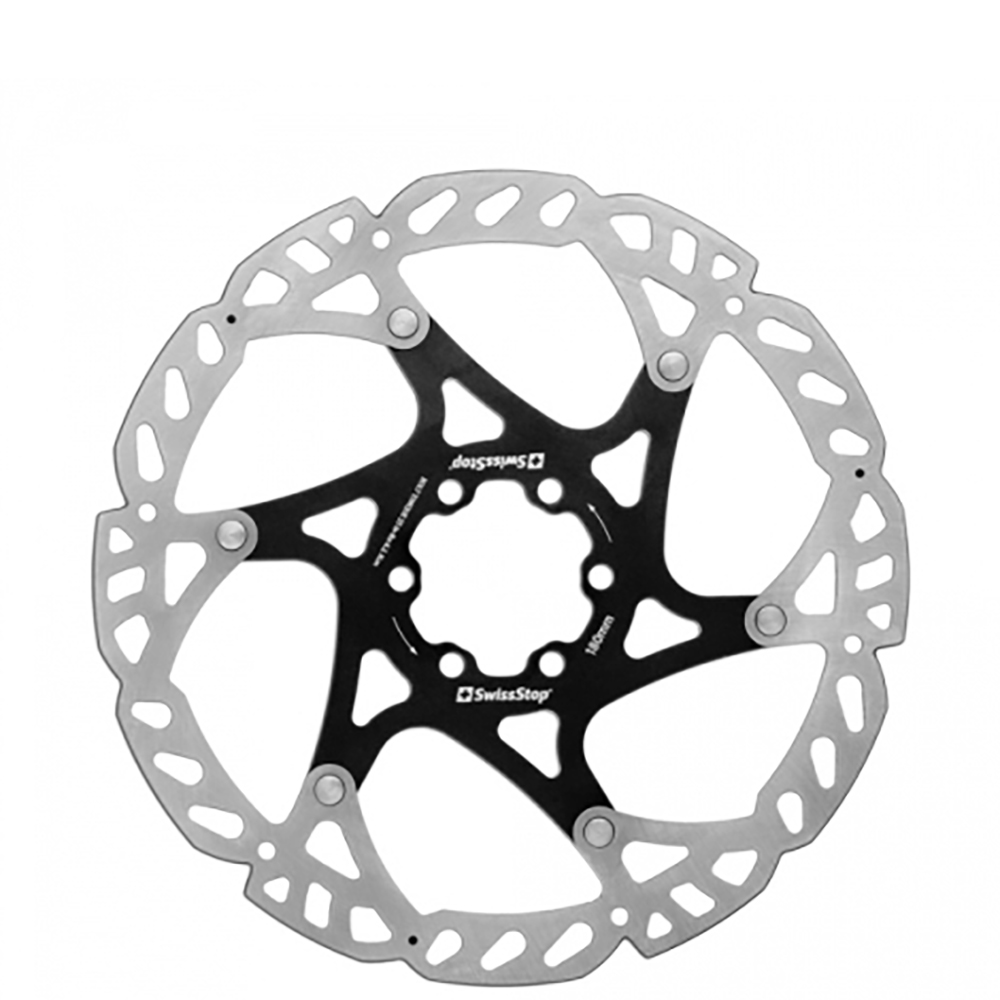
Best mountain bike disc brake rotor for modulation
Cutting-edge Swiss engineering for precision stopping.
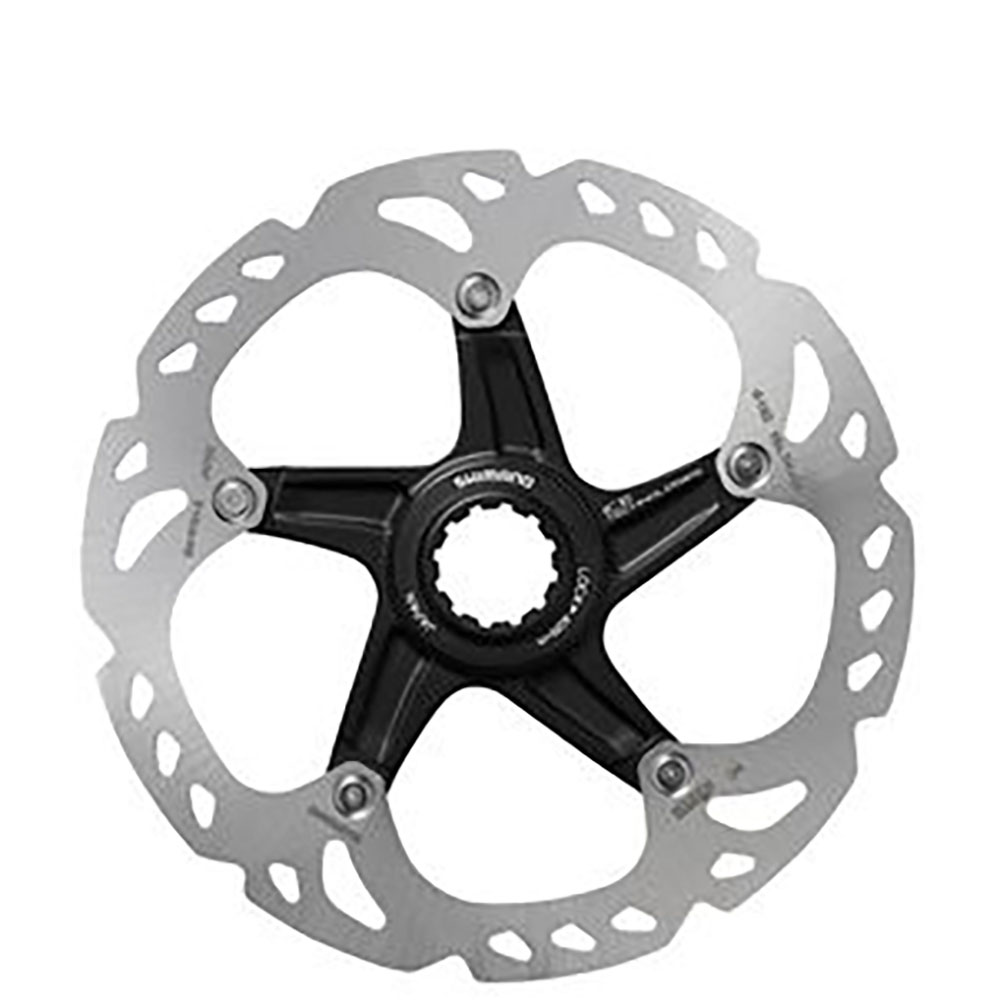
Best mountain bike disc brake rotor for fast stopping
Some of the fastest-stopping and most reliable discs.
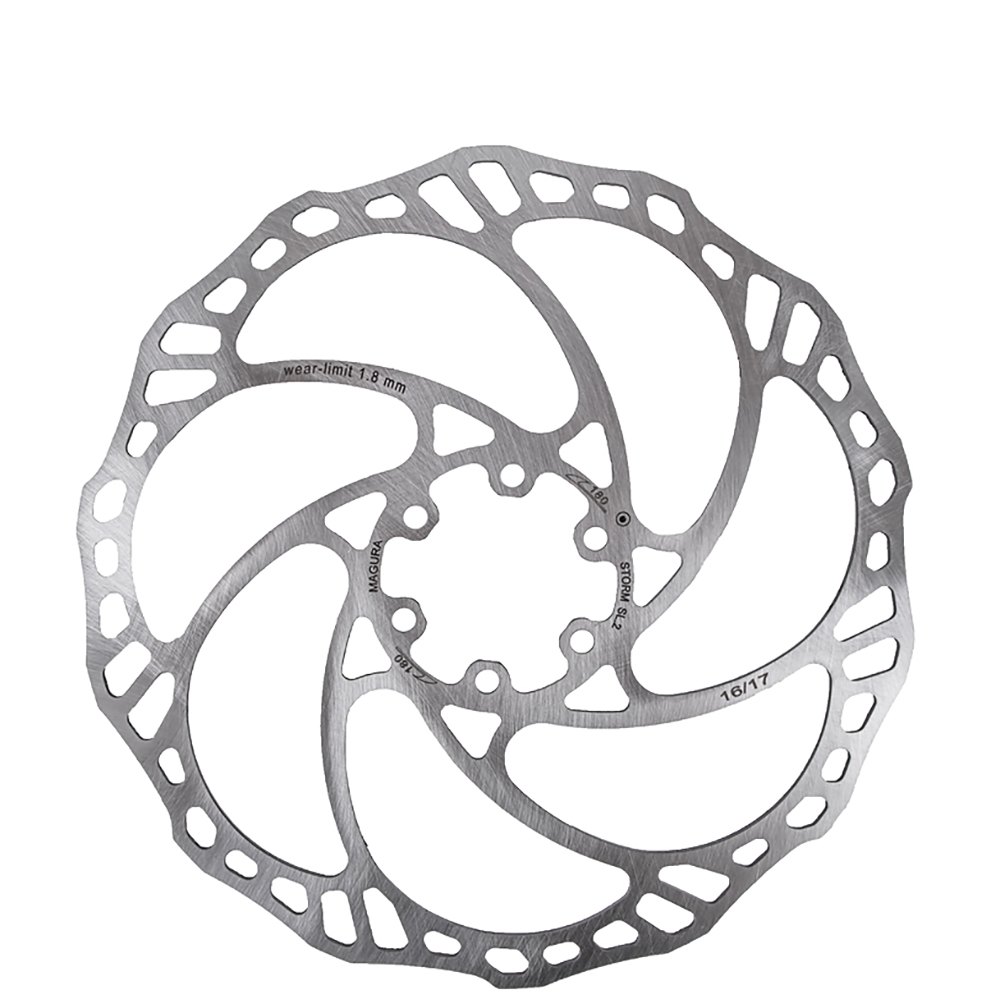
Best lightweight mountain bike disc brake rotor
Lightweight rotors with a wider brake surface to increase modulation.
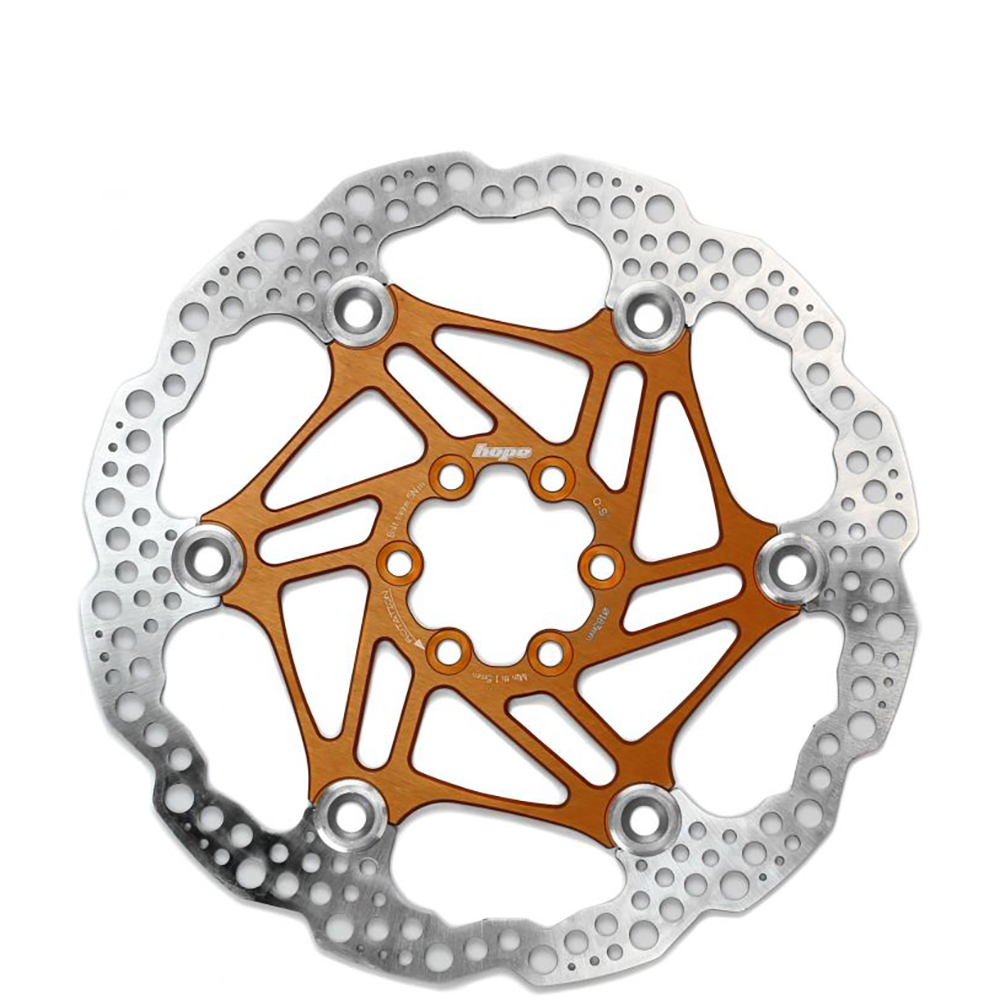
Best warp-resistant mountain bike disc brake rotor
Colorful stoppers with a two-piece design to resist warping.
See the next 3 disc brake rotors ↓
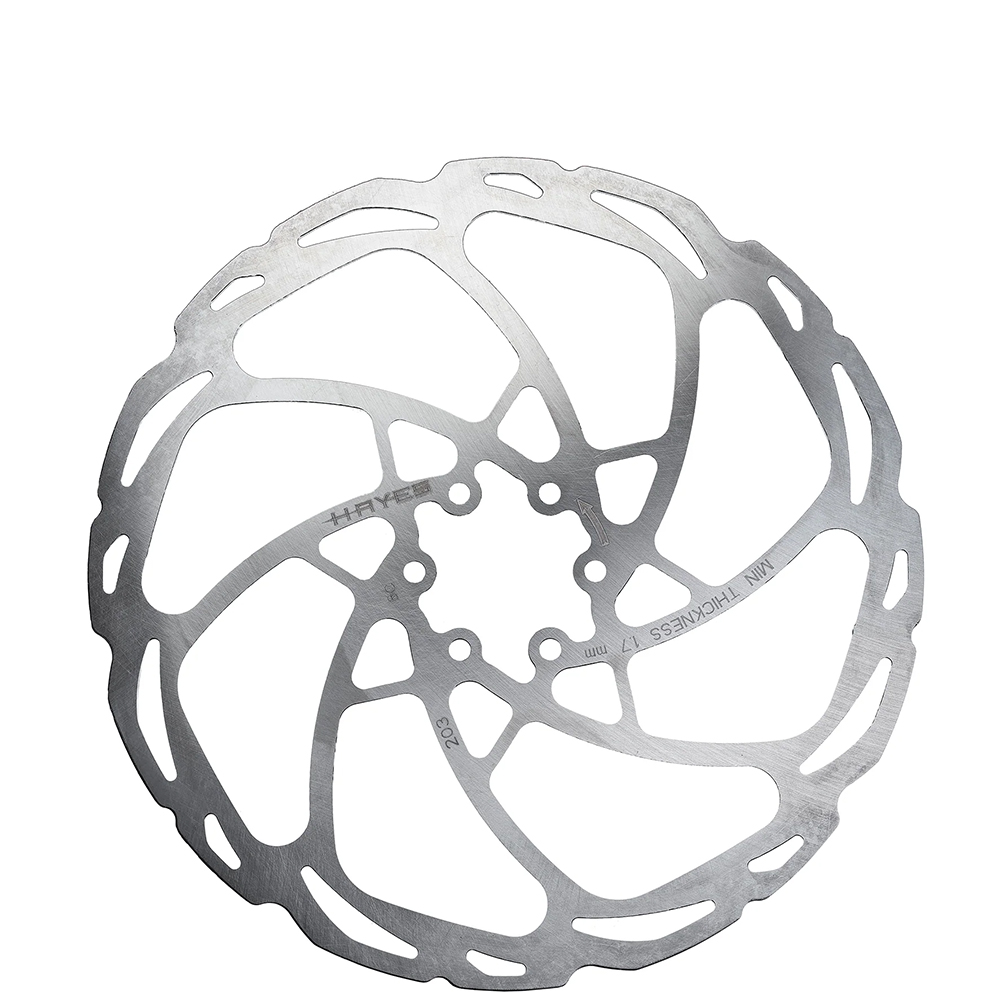
Best mountain bike disc brake rotor for gravity riders
Large diameter, spinning stoppers for gravity riders.
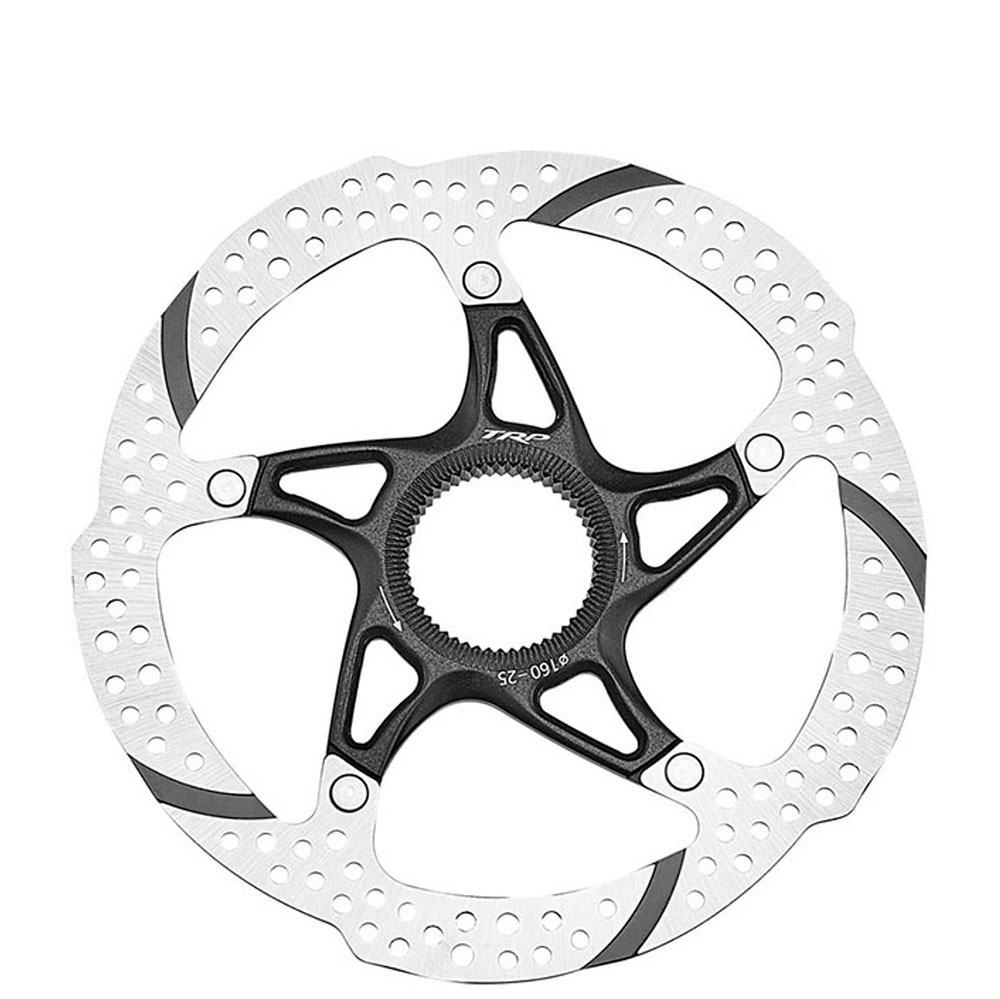
Best mountain bike disc brake rotor for muddy conditions
Two-piece grooved rotors with flush carrier rivets are designed to have no clearance issues.
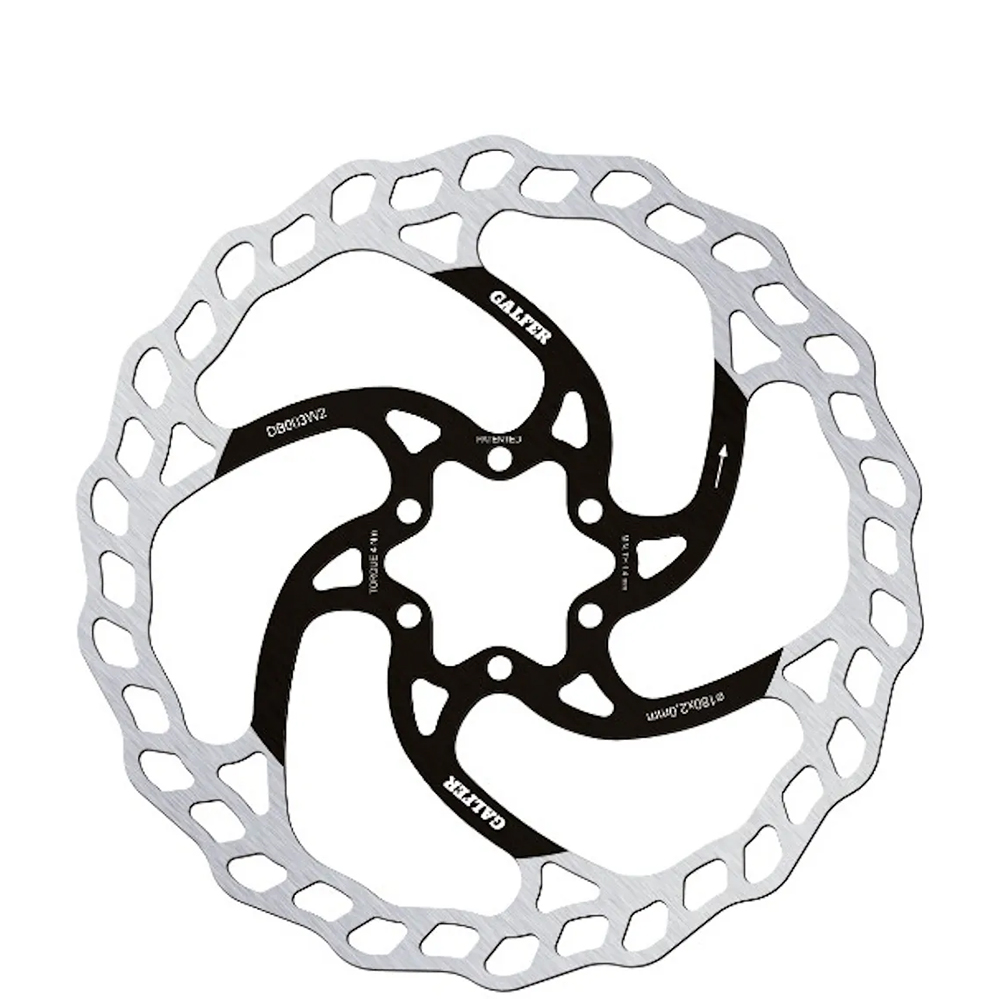
Best mountain bike disc brake rotor for durability
Durable and consistent laser-cut rotors with heat treatment.
Best mountain bike disc brake rotors
Why trust BikePerfect
1. Best overall
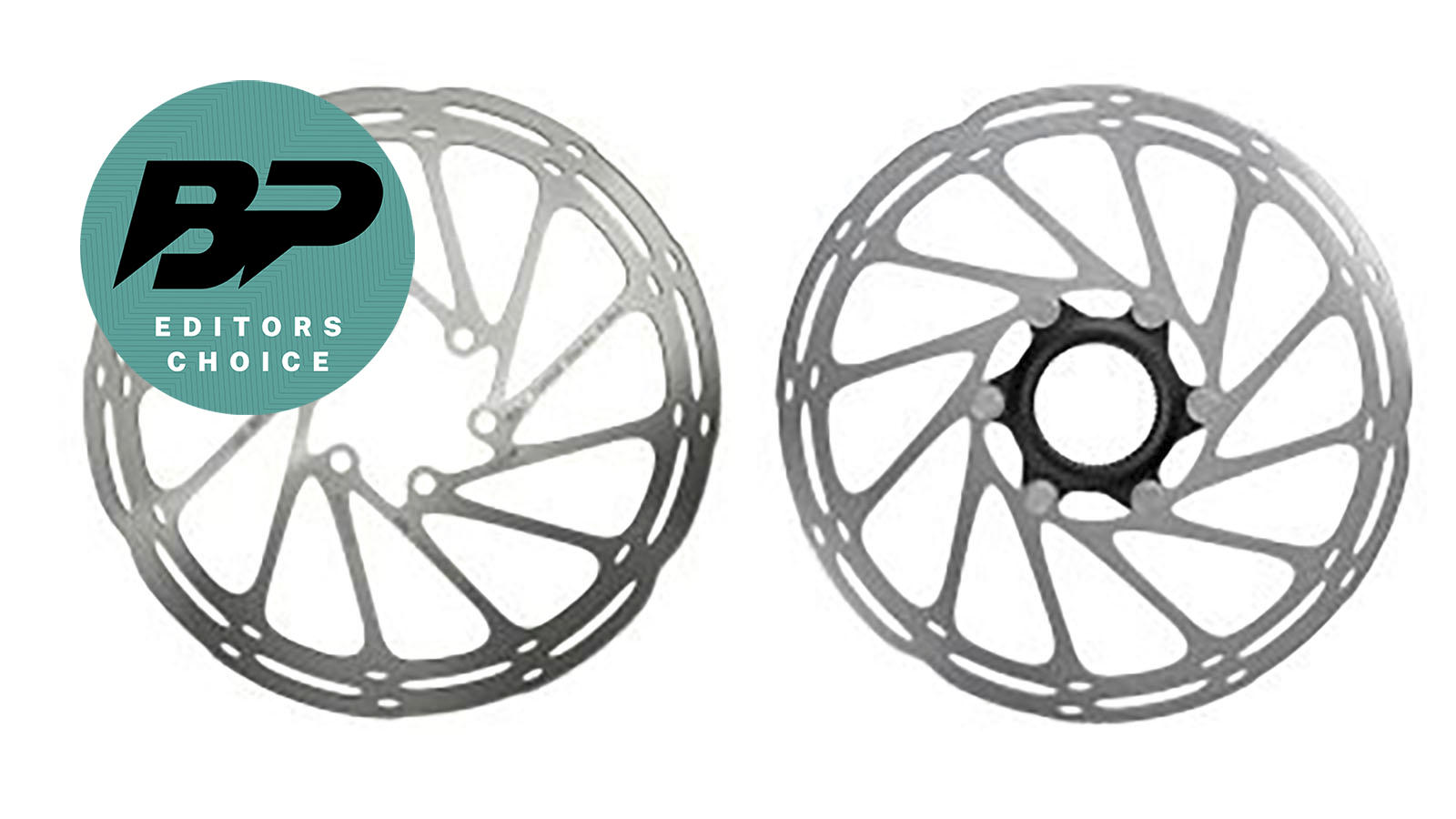
SRAM CenterLine
Specifications
Reasons to buy
Reasons to avoid
SRAM’s CenterLine rotors aren’t a fancy two-piece design, and they can be a bit noisy, though not as bad as the gobble-gobble Avid (SRAM's old brake brand) discs of long ago. Now available as a 6-bolt mount and center lock, the CenterLine Rotors feature a 12-spoke design that stands up well to warping and features a rounded edge.
Available in sizes from 140mm all the way up to 220mm, the all-steel rotors are simple but effective stoppers – and you can usually find them on sale too.
2. Best value
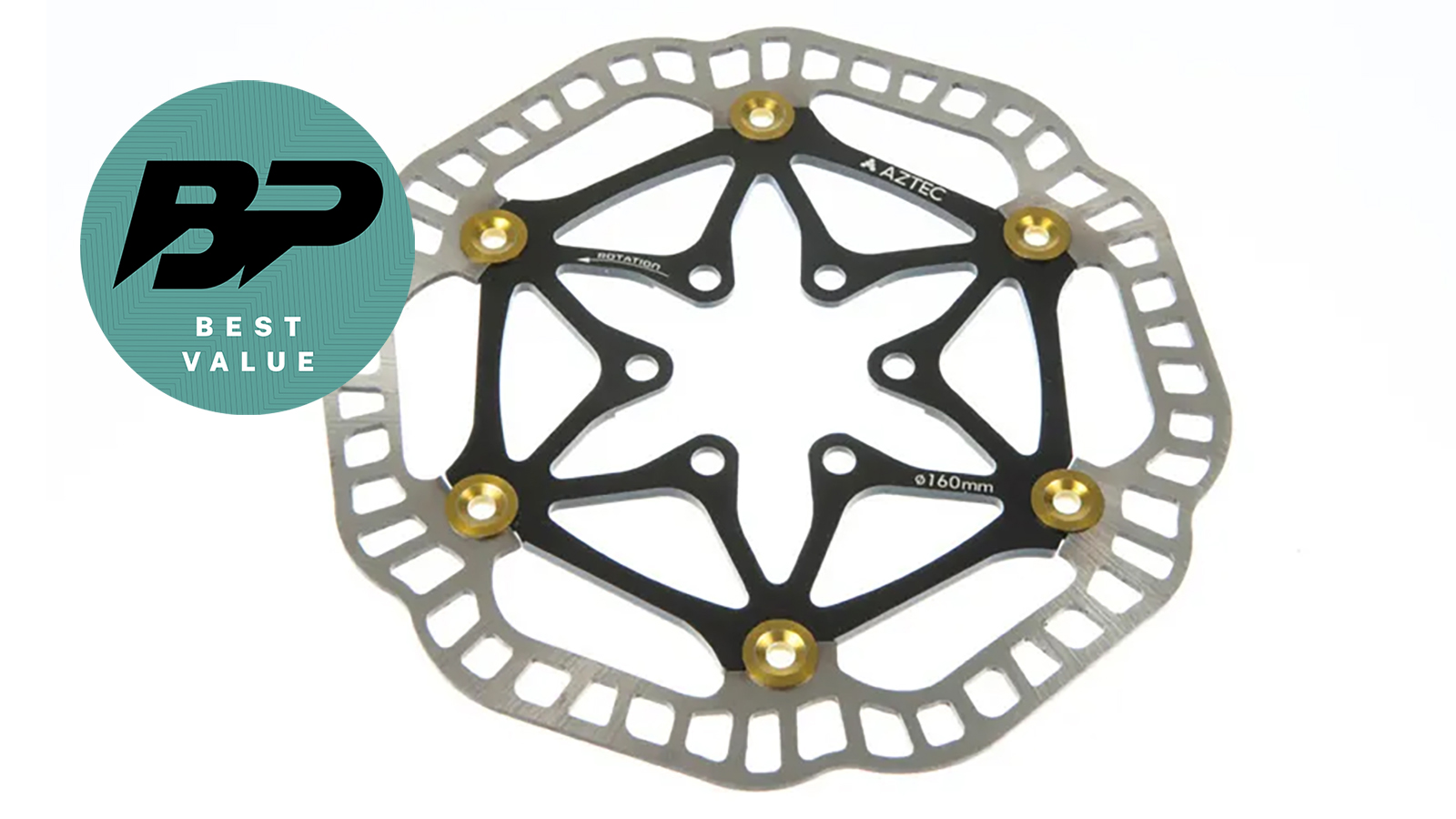
Aztec Alloy/Steel Floating Rotor
Specifications
Reasons to buy
Reasons to avoid
If you're looking for the most affordable disc brake rotors, Aztec's alloy/stainless steel offering is an excellent price. It's only available in two sizes however: 160mm and 180mm.
It's a lightweight, floating rotor design so allows for better heat dissipation, as well as preventing warping. The Aztec is a 6-bolt rotor and is compatible with most hydraulic and mechanical disc calipers.
3. Best for modulation
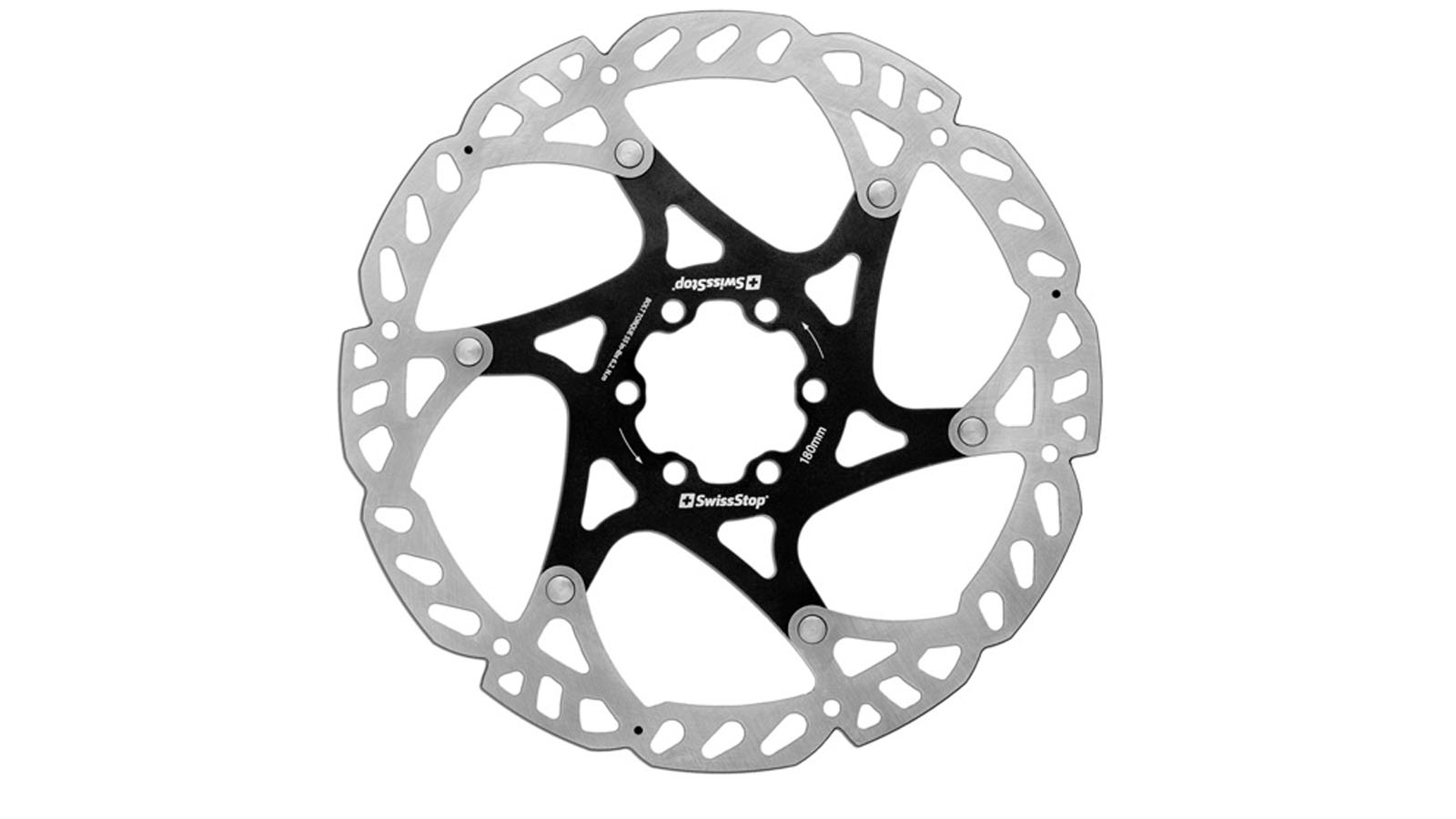
SwissStop Catalyst
Specifications
Reasons to buy
Reasons to avoid
In 2015, the engineers at SwissStop started tinkering with disc rotors, looking at heat transfer and structure to find the best possible balance between temperature dissipation, strength, and weight. They lab-tested a range of discs, and then designed digital algorithms based on what they learned to test a range of models to simulate heat, different structures, and airflow.
The result is the Catalyst Disc Rotor. With a two-piece design consisting of a 7075-T6 aluminum spider, SwissStop chose SUS410 stainless steel for the brake track because of its weight and thermal management properties. SwissStop also designed the geometry of the brake track area to minimize vibrations and shuddering.
4. Best for fast stopping
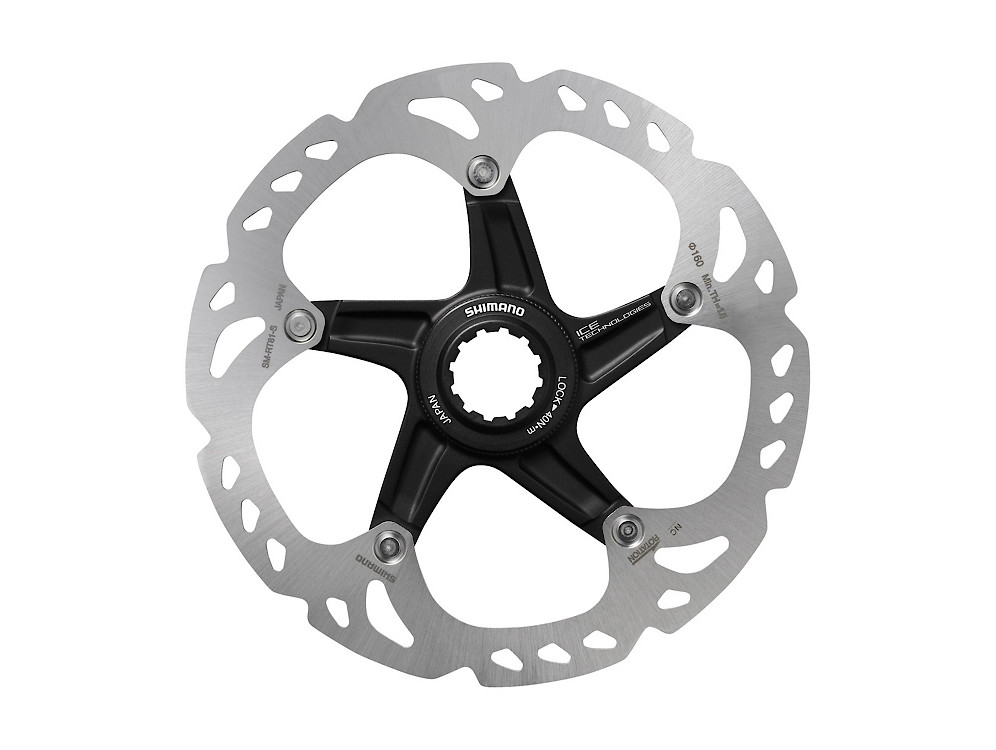
Shimano Deore XT M8000
Specifications
Reasons to buy
Reasons to avoid
Shimano’s Ice Tech rotors are some of the fastest-stopping and most reliable discs you can buy. The center lock XT M8000 discs feature the brand’s Ice Tech construction which sees an aluminum core sandwiched between a steel exterior. This design cuts a small amount of weight and allows the rotor to manage heat better than a full steel rotor.
Built around an aluminum carrier, the M8000 rotors see a tapered fin along the inner edge to help draw heat away from the braking surface and expedite heat dissipation.
5. Best lightweight
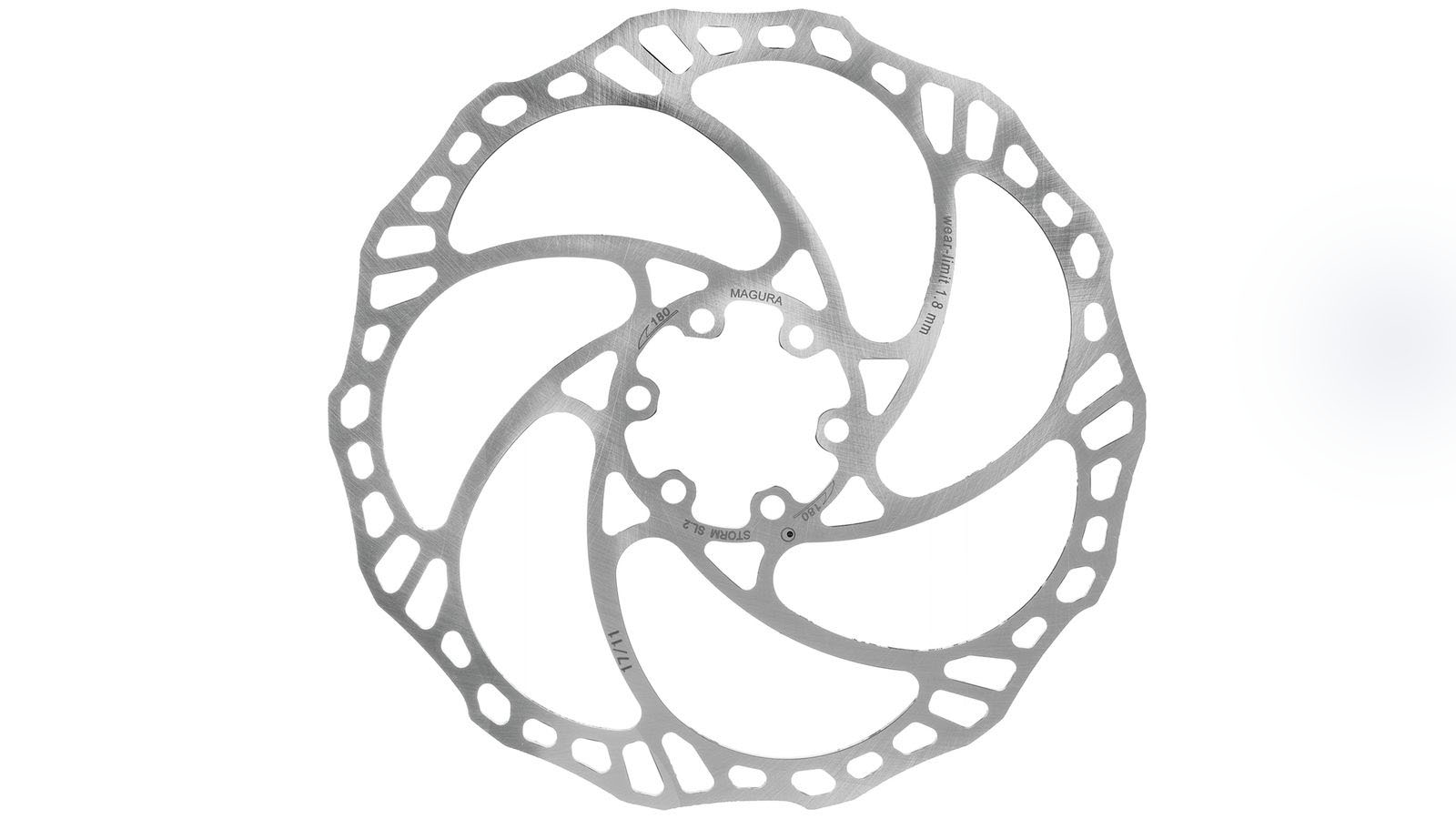
Magura Storm SL.2 6-Bolt
Specifications
Reasons to buy
Reasons to avoid
Disc rotors are unsprung rotating mass, meaning it is at least three times harder to accelerate than non-rotating mass. To every weight weenie’s delight, the Magura Storm SL.2 6-Bolt rotor tips the scales at just 118g in a 180mm diameter.
For such a lightweight rotor, it has a wider brake surface, which helps to stop the pads from tipping and increases modulation – plus it looks great. However, with so many cutouts, these rotors chew through pads pretty quickly, and they are only available in 160mm and 180mm diameters.
6. Best warp resistant
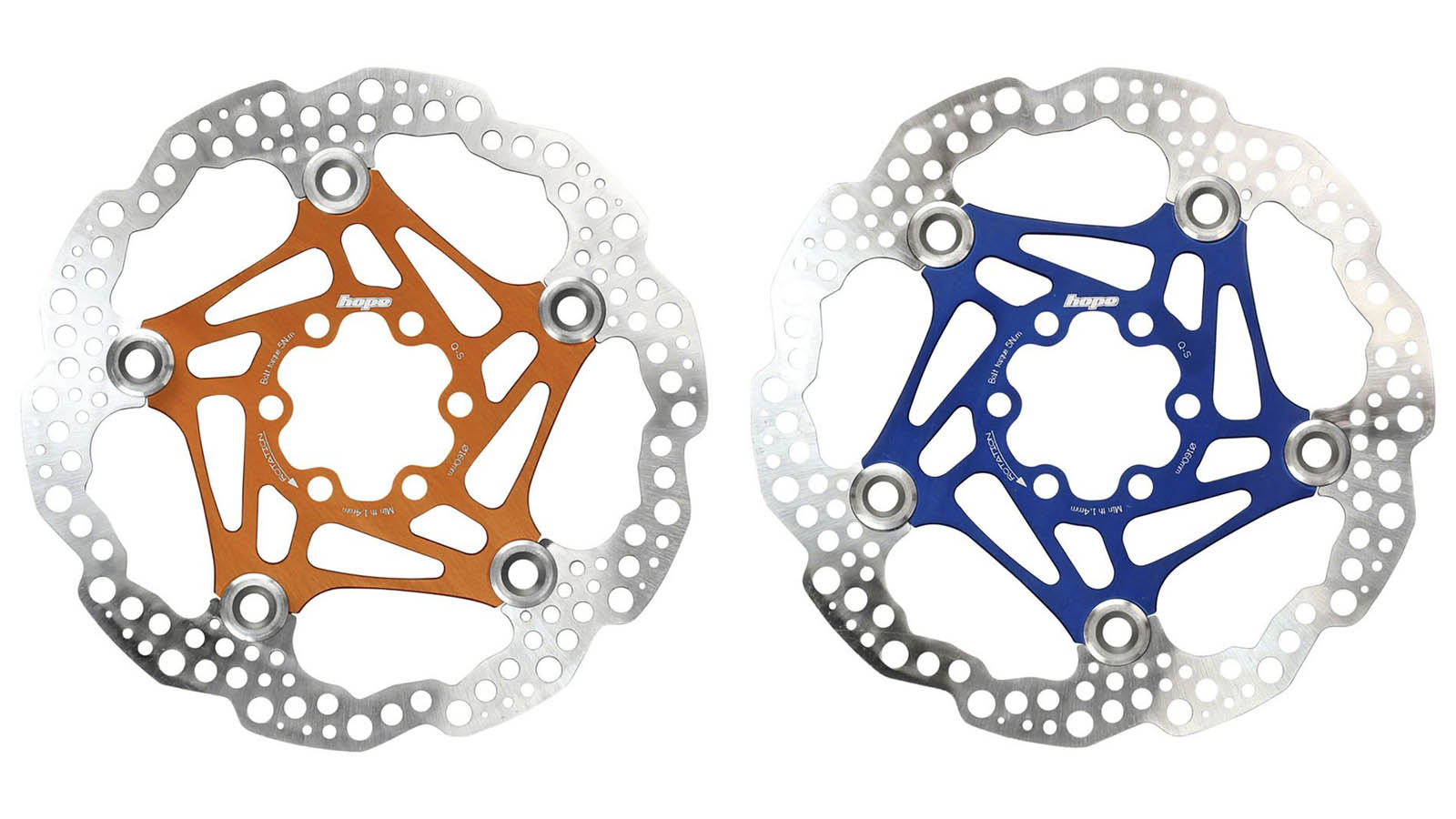
Hope Floating Disc
Specifications
Reasons to buy
Reasons to avoid
For the most part, rotors are silver on silver, or silver on black. So leave it to Hope to add a splash of color with anodized carriers on its Floating Disc Rotor. The aluminum carrier is CNC machined and riveted to a laser-cut steel disc; everything is made in Hope’s Barnoldswick, UK facility.
Thanks to a two-piece design, Hope says the Floating Disc rotor will resist warping under extreme heat and the perforated rotor does well to clear muck. With the carrier and rivets extending out nearly to the braking surface, Hope warns that the Floating Disc may run into clearance issues with some brake and fork/frame combos.
7. Best for gravity riders
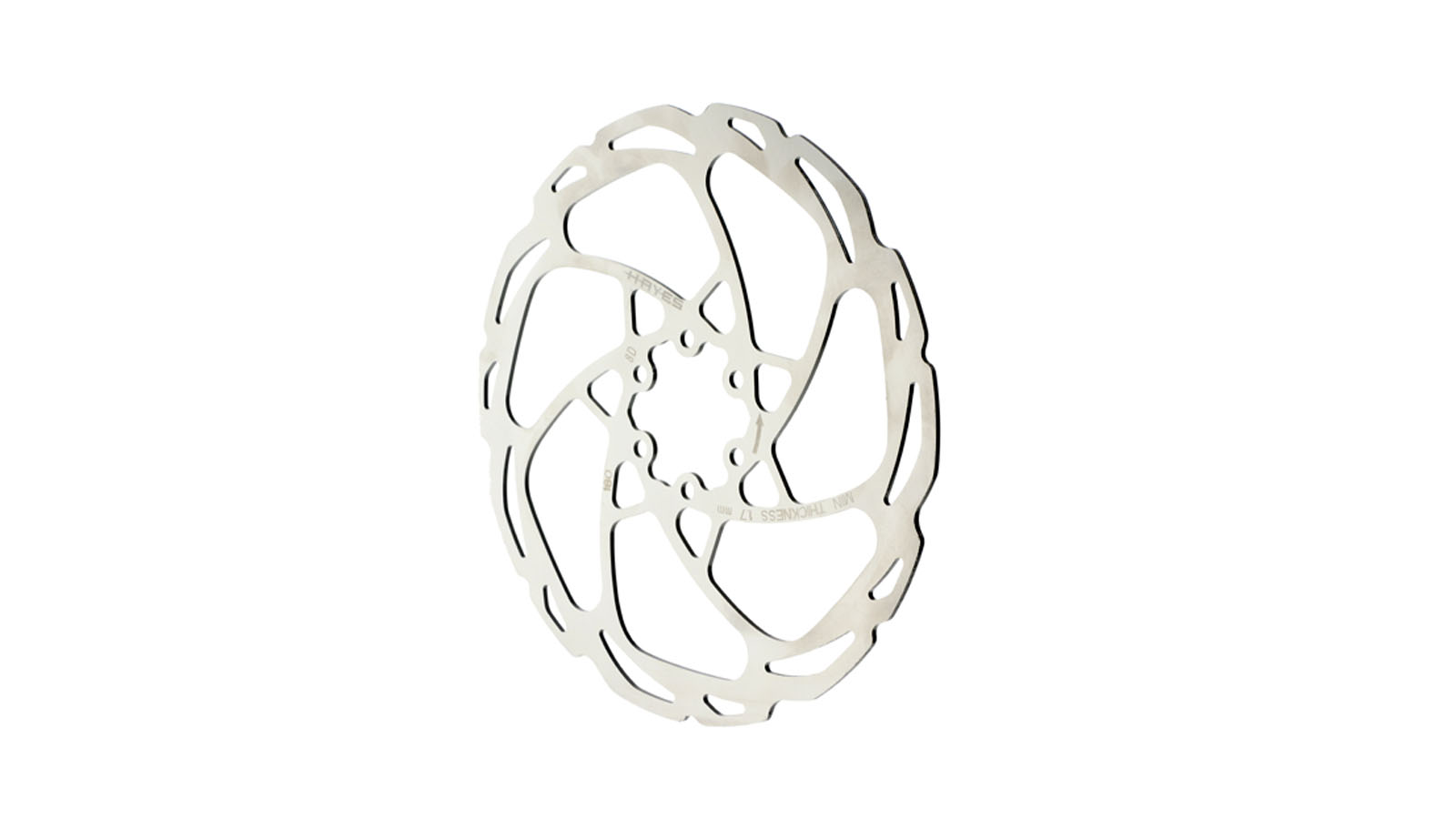
Hayes D-Series Rotor
Specifications
Reasons to buy
Reasons to avoid
Only available in larger diameters, Hayes’ D-Series rotors are designed for power. At 1.95mm thick, the rotor can absorb and dissipate heat more efficiently under braking to keep stopping more consistent as the temperature builds.
With the D-Series Rotor, Hayes introduced what it calls Modal Resonance Cancellation, a fancy way of saying the brand worked out when a rotor and pad begin to resonate and designed them to work together to cancel out this vibration – in short, they shouldn’t howl. Hayes also employed what it calls QuickBite2, so the rotors bend fast and distribute pad material evenly into the friction tracks.
8. Best for muddy conditions
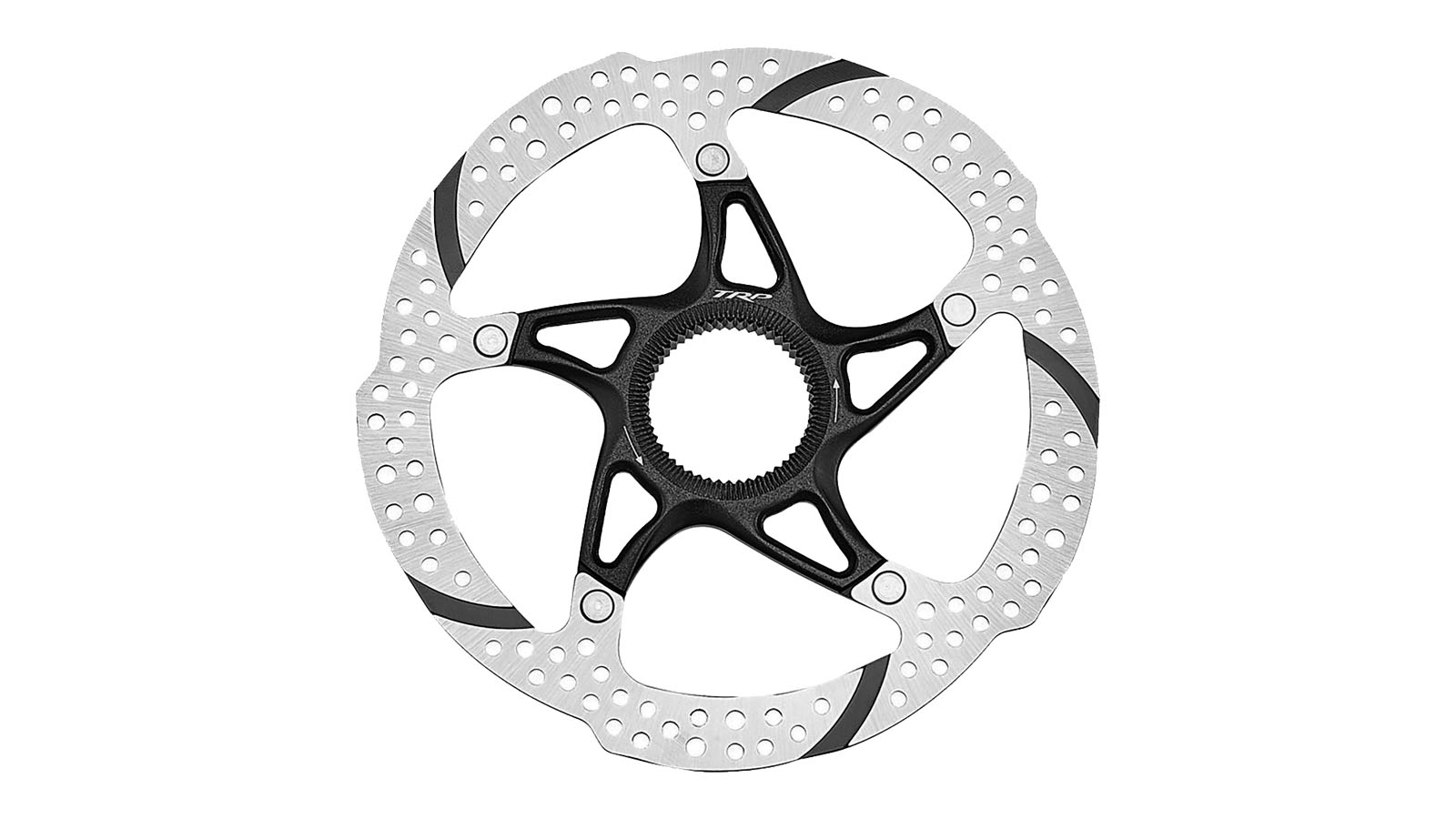
TRP-25
Specifications
Reasons to buy
Reasons to avoid
TRP’s two-piece rotors feature a traditional floating design with a steel braking surface wrapped around an aluminum carrier. The carrier and rivets are machined to be flush with the rest of the rotor to prevent the clearance issues some other two-piece rotors rub up against.
The braking surface features six recessed slots to allow water, mud, and other trail debris trapped between the pad and rotor an escape route – they also serve as a good wear indicator. Available in sizes from 140mm to 203mm, the TRP two-piece rotors are now available in both center lock and 6-bolt – however, they are different models. For the center lock version, make sure you hang onto the lock ring from your previous rotors.
9. Best for durability
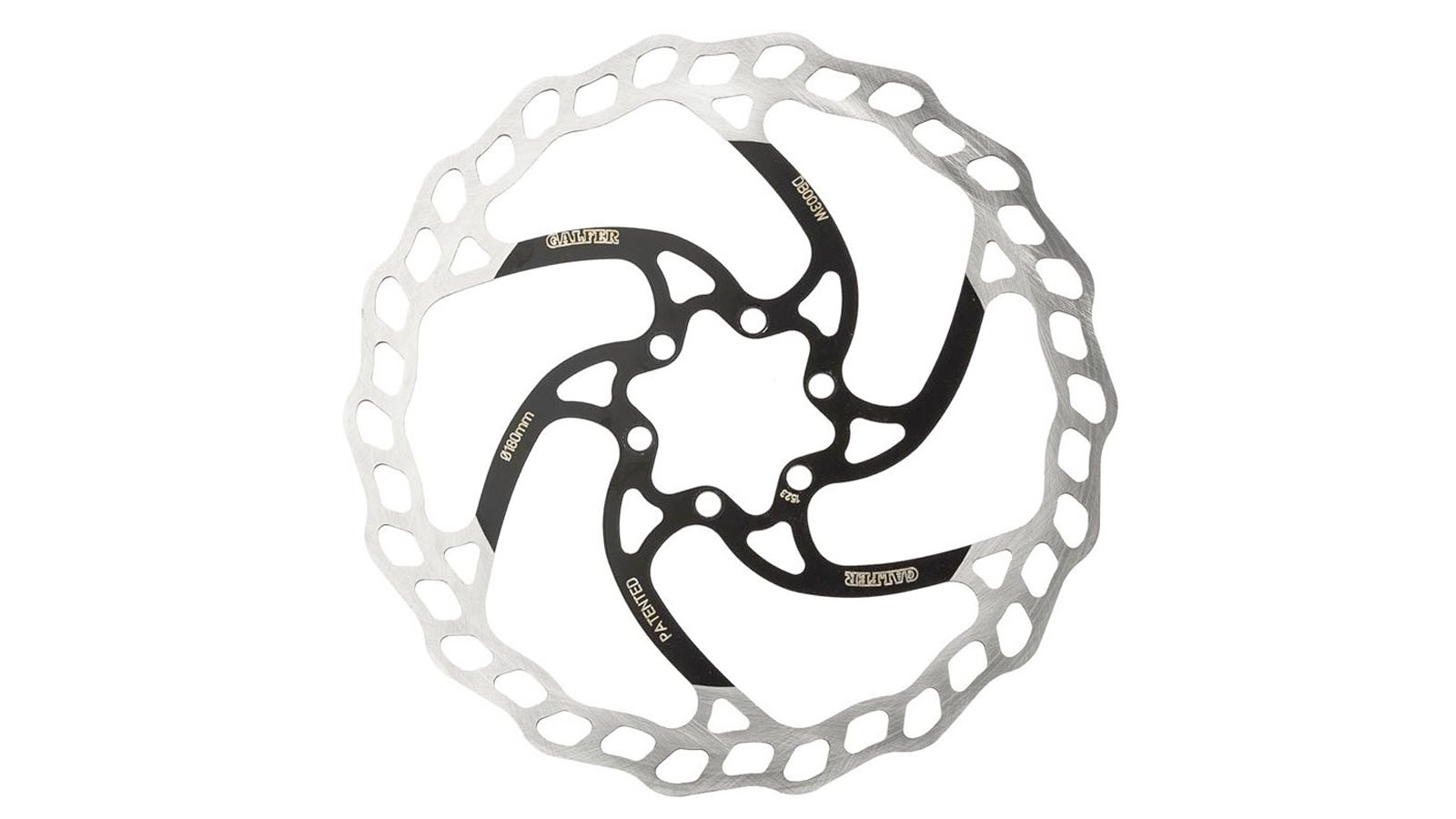
Galfer Disc Wave
Specifications
Reasons to buy
Reasons to avoid
Galfer is well known in the powersports industry, providing OEM stock for quite a few motorcycle brands, and the Spanish outfit has also applied its stopping power expertise to MTBs. The Disc Wave rotor is laser-cut and double-disc ground from high carbon stainless steel for durability and to ensure either side of the disc is actually parallel.
The rotors boast an anti-corrosion and heat treatment for more consistent braking, along with temperature management and dissipation to prevent warping.
How to choose the best mountain bike disc brake rotors
How do you know you need new rotors?
Beyond just an upgrade to something lighter or larger, rotors wear out over time. Many discs will have a minimum thickness printed somewhere on the rotor; you’ll need a set of calipers to measure how thick yours is. If your rotors don’t specify a minimum, measure the thickness of the braking surface and compare it to an area the pads don’t touch; if there is a difference of 0.2mm – 0.3mm your rotor is worn and it’s time for a new one.
If you don’t have a set of calipers to measure with, take a pick or a paperclip and run it along the rotor; if the pick gets caught up on an edge at the bottom of the braking surface, it might be time for a new disc.
Can a bent rotor be repaired or should it be replaced?
Rotors are surprisingly fragile, and it doesn’t take much to knock one out of true – extreme heat from dragging your brakes all the way down a descent can also warp discs. More often than not a few minutes with a truing tool will silence a disc that pings a brake pad as the wheel spins, but rotors can become deformed past the point of no return. If you’re wrenching away at a disc for more than ten minutes and it's showing no signs of improvement, it’s time for a new one.
Are bigger MTB rotors better?
Rotors come in 140mm, 160mm, 180mm, and 203mm sizes, and depending on the category of bike you’re riding, it will be set up for different-sized discs: the front rotor will usually be a size up from the rear.
XC bikes will often have a 160mm rotor in the front; trail and enduro bikes will jump up to 180mm; and downhill bikes or e-MTBs will have a 200mm+ dinner plate.
The size of your new rotor will have a drastic impact on braking power. If you’re looking for a bit of added power, consider going a size up; however, you’ll likely need a mount-to-caliper-adaptor to make up the space.
On the other hand, larger rotors are heavier, adaptors create another piece to come out of alignment, and they are more exposed to trail hazards. Some fork manufacturers also advise against using rotors larger than 180mm on their short-travel mountain bike forks.
What’s the difference between 6-bolt and center lock?
The hubs on your wheels will determine whether you need a 6-bolt or center lock rotor. Center lock rotors are secured to the hub with a lock ring, while 6-bolt rotors use, you guessed it, six Torx bolts.
Center lock rotors are quicker to install and remove but are usually a touch heavier while the hubs save a few grams.
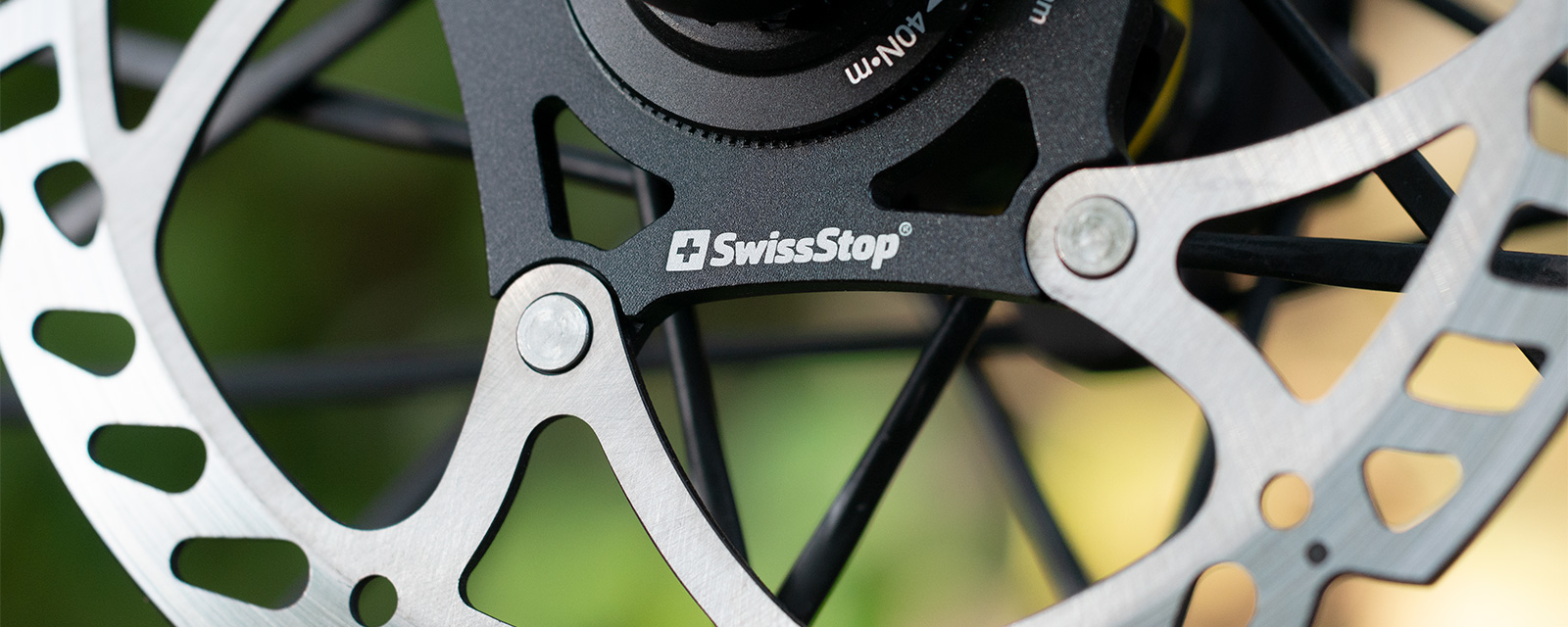
Which type of brake rotor is best?
Floating rotors see the steel disc mounted to an aluminum carrier, a technology borrowed from motorcycles. Floating rotors are claimed to offer better heat dissipation and improved warping resistance, but the real benefit is they are always lighter than non-floating designs.
Do brake pads make a difference?
The debate over metallic vs organic pads is hotly contested, and we’re not going to get into that here. When bolting a new set of rotors onto your wheels, take note if “resin only” is printed anywhere on the disc. Usually only affecting rotors on the lower end of the price spectrum, metallic pads will chew up resin-only discs, and may even cause them to overheat and buckle.
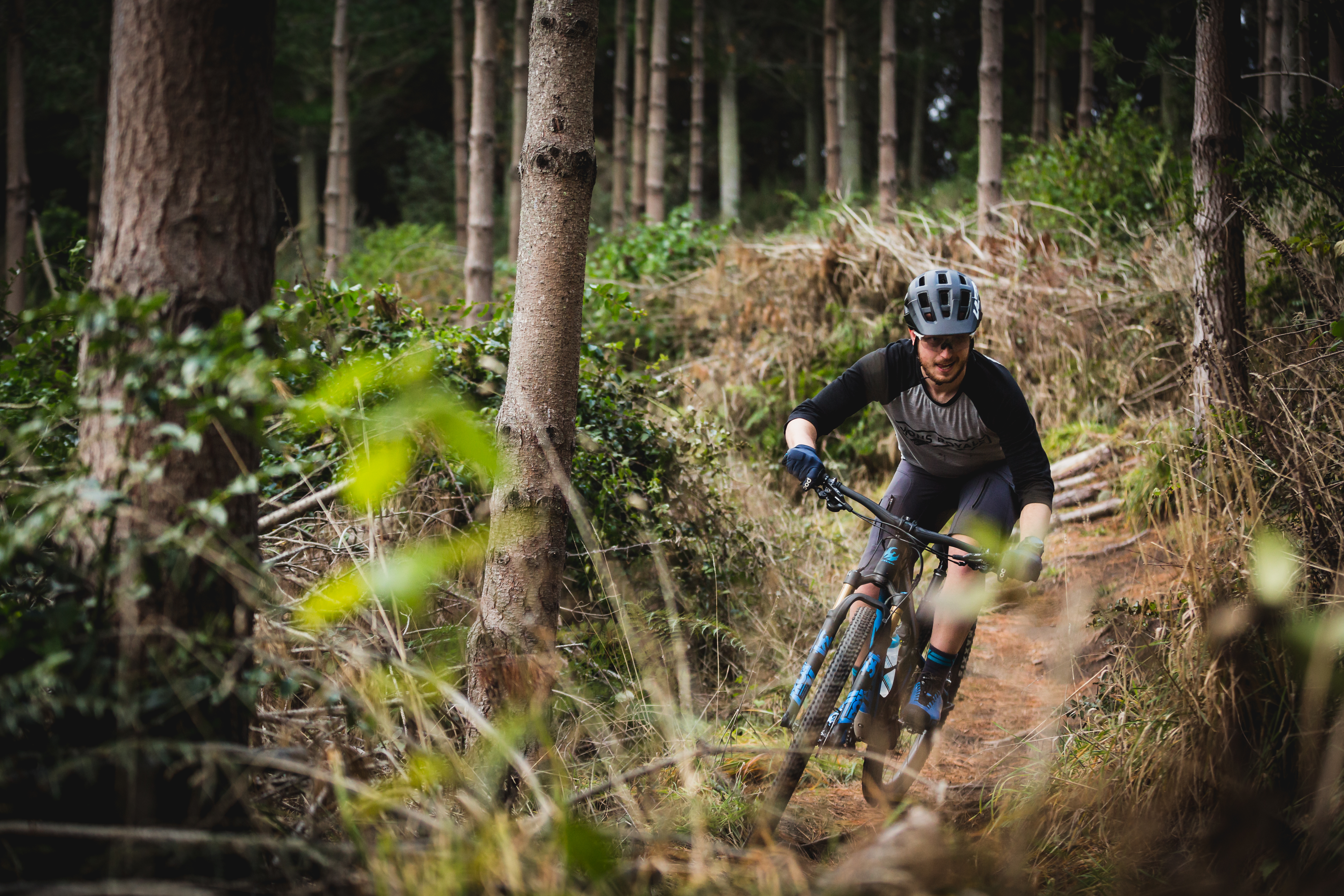
Born and bred in Colorado, and now based in Australia, Colin comes from a ski racing background and started riding as a way to stay fit through the summer months. His father, a former European pro, convinced him to join the Colorado State University collegiate cycling team, and he hasn't stopped since. It's not often he pins on a number nowadays, and you'll likely find him in search of flowy singletrack, gravel roads and hairpin corners. Colin has worked at Bikeradar and is a regular contributor to Australian Mountain Bike and Cyclist magazines.
Rides: BMC Team Machine SLR01, Trek Top Fuel 9, Ibis Ripley
